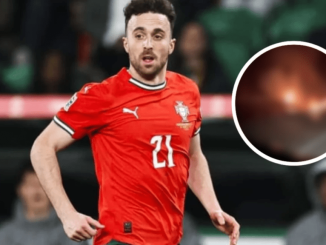
A brutal crime shook the city of Cariacica, Espírito Santo, and left the community in shock. The death of one-year-old Maya Pereira exposed a cruel reality hidden behind the walls of many homes: domestic violence against children.
The prime suspect, the boy’s 19-year-old father, confessed to the crime on Saturday, May 17. The tragedy sheds light on the dangers of inaction and the devastating cost of silence.
On the morning of Sunday, May 18, the suspect voluntarily presented himself at the local police station.
Unresisting, he told police he had taken his own daughter’s life. The coldness of his testimony and the nature of the details described shocked even the most experienced officers. After his confession, the man was taken to a triage center, where he remains detained awaiting a court ruling that will determine his future.
The girl’s body was found in the home where she lived with her parents. Experts identified multiple injuries, including bruises on various parts of the body and a bite mark on the child’s left arm. The scene indicated a routine of abuse that culminated in an irreversible outcome.
For neighbors, the murder wasn’t exactly a surprise. Rafaela Karina Santos, who lived near the family and was considered an “aunt” due to her emotional closeness to Maya, revealed that the violence had been recurring.
According to her, the attacks were frequent, but rarely formally reported. He had already hit his wife several times. With Maya, it was worse. He said her crying drove him crazy. There was one day he didn’t go to work just to spend the day hitting her, Rafaela said.
The neighbor also reported that during one of the assault sessions, one of the boy’s arms was broken.
The incident, however, was not reported to the authorities, revealing the extent of the fear and the normalization of violence within the community.
Another factor that may have contributed to the escalating aggression was isolation. The family had temporarily moved to a rural area, away from their support network and the watchful eyes of friends and neighbors.
During this period, rumors about alleged doubts about Maya’s paternity reportedly intensified the father’s hostility. The family’s return to their old neighborhood rekindled the violence, but no one expected the situation to end in such a grave tragedy.
The boy’s mother also gave a statement to the Civil Police. Despite suspicions of collusion or negligence, she was released due to lack of evidence of involvement in the crime. However, the investigation continues, and new information should emerge in the coming days.
Police are investigating whether the mother was negligent and whether other people close to the couple were aware of the attacks.
The hope is that the investigation’s conclusion will help us understand the factors that allowed the violence to continue for so long without effective intervention.
After the case became public, neighbors in the neighborhood where the family lived organized a small vigil in Maya’s honor.
Candles, signs, and cries for justice filled the street outside the house where the girl spent her final days. The mood is one of rebellion, sadness, and self-reflection.
Maya’s murder has rekindled the debate about the effectiveness of public policies to protect children and society’s role in reporting cases of domestic violence.
Lack of reporting, due to fear or distrust of institutions, remains one of the biggest obstacles to preventing crimes like this.
Maya’s case is more than a family tragedy. It’s a portrait of a systemic problem. Violence against children, especially within the home, remains one of the most underreported crimes in the country.
Often, the signs are there (bruises, constant crying, isolation), but they are ignored, normalized, or hidden under the veil of family privacy.
Experts emphasize that combating domestic violence requires collective action: vigilant neighbors, health and education professionals trained to identify signs of abuse, and authorities committed to acting quickly.
Maya’s life cannot be brought back, but her death must serve as a warning. Silence, when it comes to violence against children, can never be an option.


